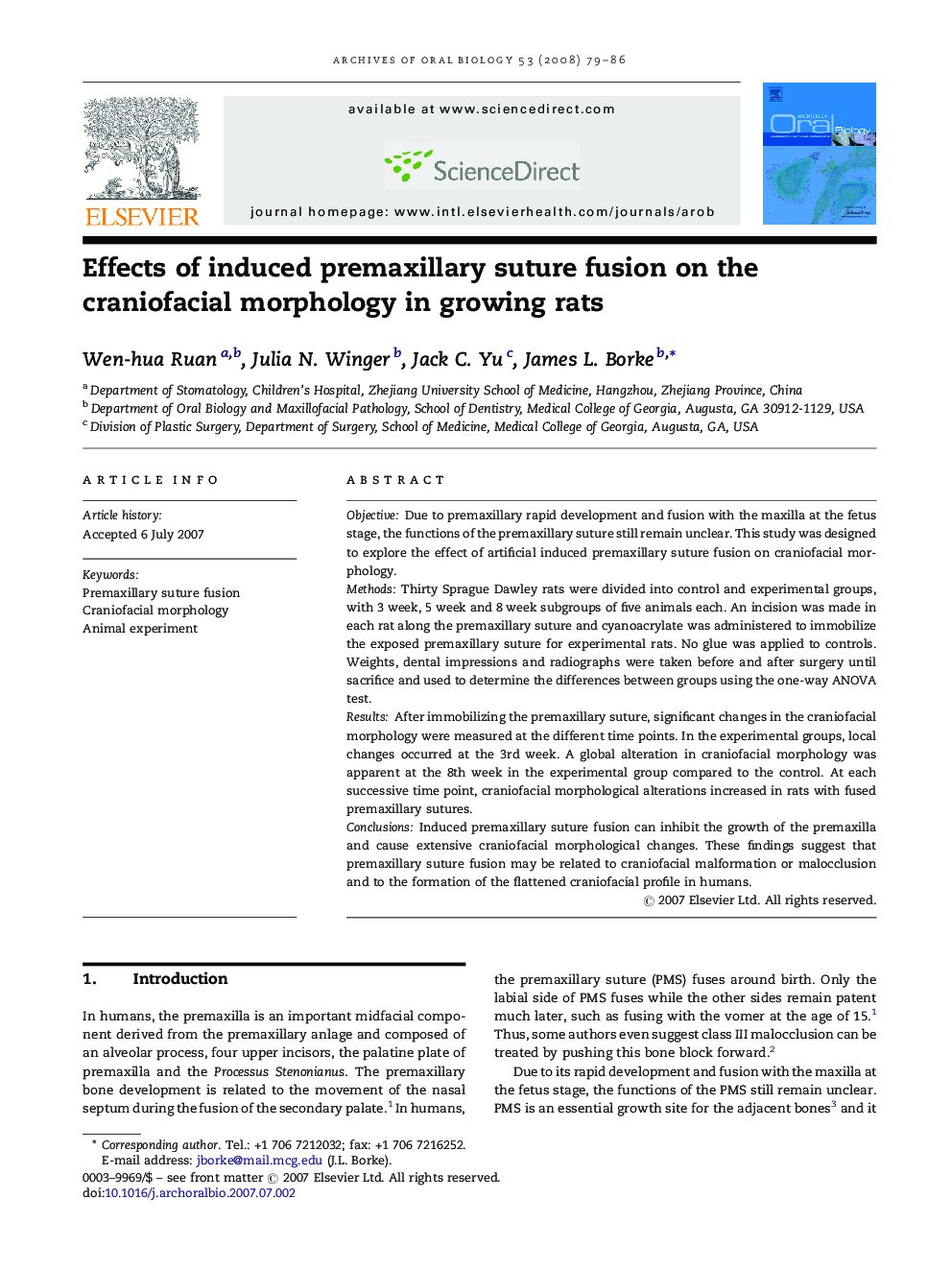| Article ID | Journal | Published Year | Pages | File Type |
|---|---|---|---|---|
| 3121244 | Archives of Oral Biology | 2008 | 8 Pages |
ObjectiveDue to premaxillary rapid development and fusion with the maxilla at the fetus stage, the functions of the premaxillary suture still remain unclear. This study was designed to explore the effect of artificial induced premaxillary suture fusion on craniofacial morphology.MethodsThirty Sprague Dawley rats were divided into control and experimental groups, with 3 week, 5 week and 8 week subgroups of five animals each. An incision was made in each rat along the premaxillary suture and cyanoacrylate was administered to immobilize the exposed premaxillary suture for experimental rats. No glue was applied to controls. Weights, dental impressions and radiographs were taken before and after surgery until sacrifice and used to determine the differences between groups using the one-way ANOVA test.ResultsAfter immobilizing the premaxillary suture, significant changes in the craniofacial morphology were measured at the different time points. In the experimental groups, local changes occurred at the 3rd week. A global alteration in craniofacial morphology was apparent at the 8th week in the experimental group compared to the control. At each successive time point, craniofacial morphological alterations increased in rats with fused premaxillary sutures.ConclusionsInduced premaxillary suture fusion can inhibit the growth of the premaxilla and cause extensive craniofacial morphological changes. These findings suggest that premaxillary suture fusion may be related to craniofacial malformation or malocclusion and to the formation of the flattened craniofacial profile in humans.
